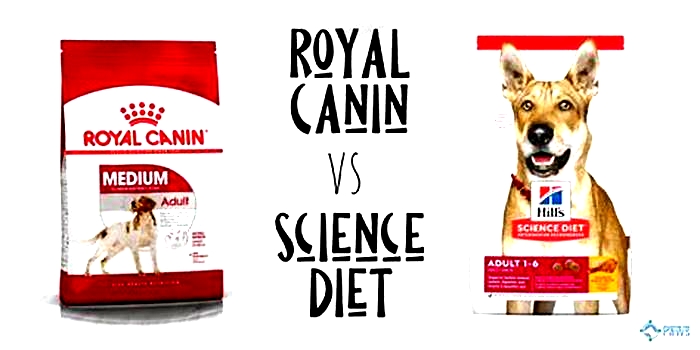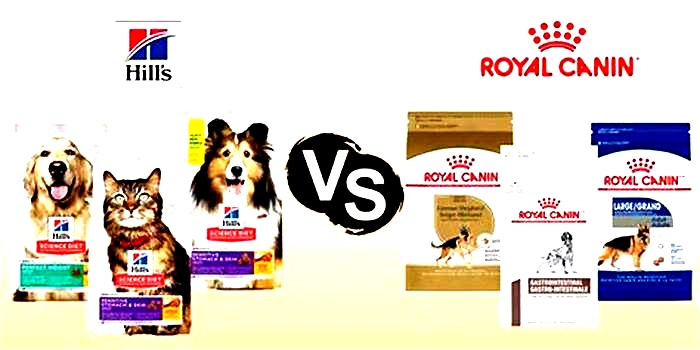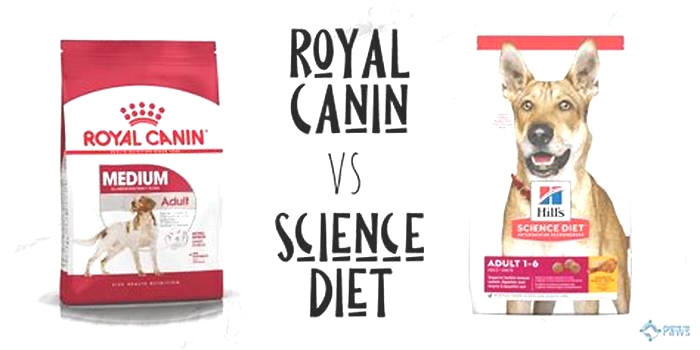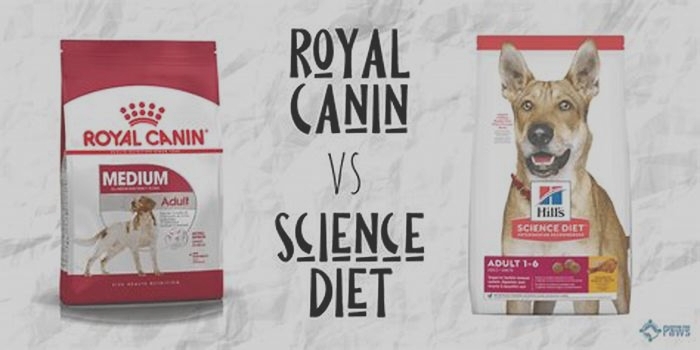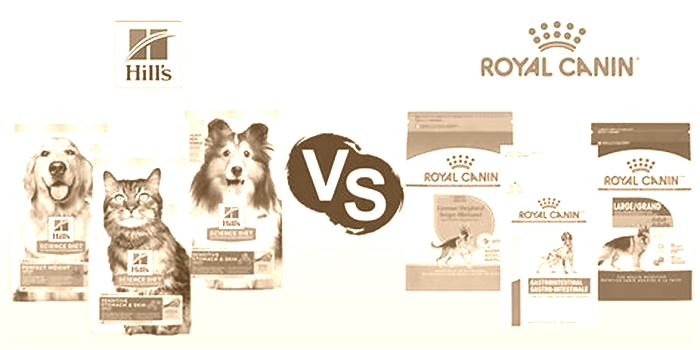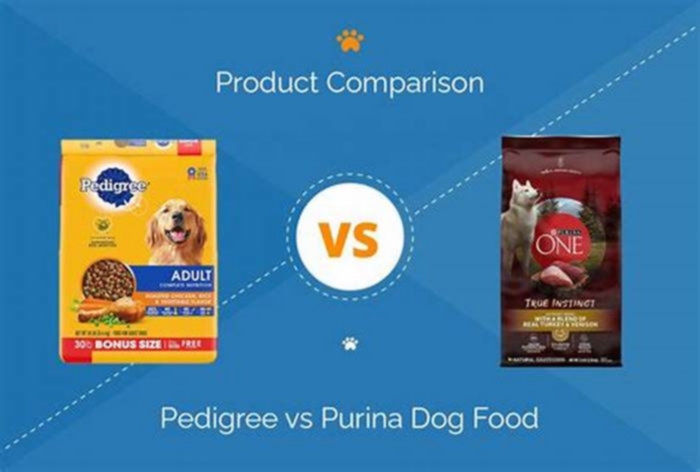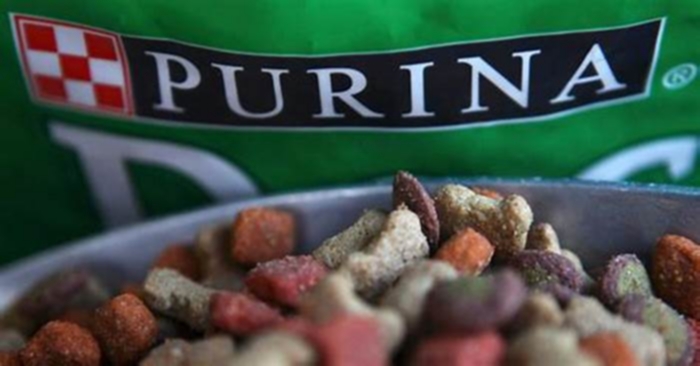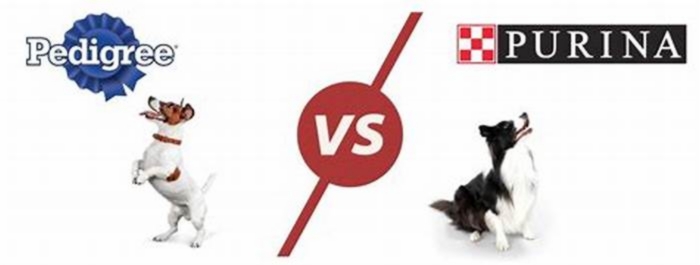Is Purina better than Hills
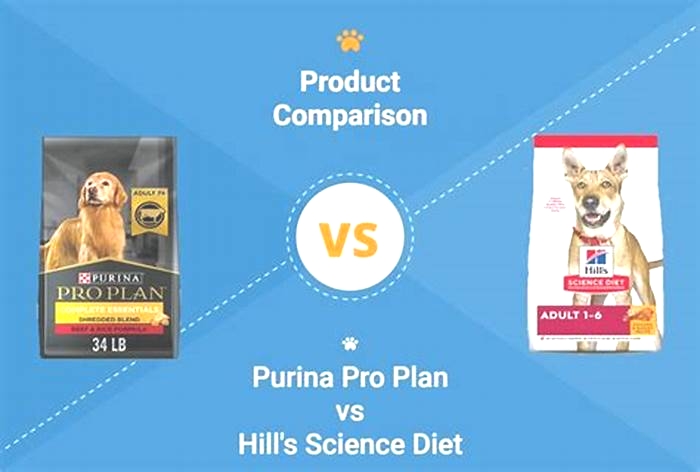
Purina Pro Plan, Hills Science Diet, & Blue Buffalo Who Reigns Supreme?
Welcome, pet parents! Today, were diving deep into the world of pet nutrition, comparing three titans in the pet food industry: Purina Pro Plan, Hills Science Diet, and Blue Buffalo. Whether youre a long-time pet owner or a new puppy or kitten enthusiast, selecting the right food can be puzzling.
Quick Key Takeaways:
- Nutritional Value: All three brands offer balanced nutrition, but the ingredients vary greatly.
- Specialized Formulas: Each brand provides options tailored for specific health needs and life stages.
- Price Point: Hills Science Diet generally tends to be slightly more expensive, but prices can vary.
- Availability: All brands are widely available both online and in stores.
Breaking It Down: The Furry Food Fight
To help you navigate through these options, lets compare these brands across several vital categories:
1. Ingredient Quality
- Purina Pro Plan: Often uses real meat as the first ingredient, incorporating wheat and corn in some formulas.
- Hills Science Diet: Leans heavily on science-backed, vet-recommended formulas with high-quality proteins.
- Blue Buffalo: Known for using real meat, whole grains, and no poultry by-product meals.
2. Special Dietary Formulas
- Purina Pro Plan: Offers specific formulas for digestive health, weight management, and sensitive skin.
- Hills Science Diet: Provides prescription diet options that are clinically proven for conditions like urinary issues and kidney health.
- Blue Buffalo: Features grain-free options and limited ingredient diets for dogs with allergies.
3. Price & Value for Money
- Purina Pro Plan: Generally offers a good balance between quality and cost.
- Hills Science Diet: Might pinch the pocket more but stands out in specialized veterinary diets.
- Blue Buffalo: Slightly pricier than Purina, often marketed as a premium option.
4. Customer Satisfaction & Trust
- Purina Pro Plan: Strong following, especially among breeders and competitive animal sports enthusiasts.
- Hills Science Diet: Trusted by veterinarians, especially for pets with specific health needs.
- Blue Buffalo: Popular for its natural ingredients and transparency in labeling.
Comparative Chart: Nutritional Showdown
| Brand | Key Ingredients | Special Diet Options | Price Range |
|---|---|---|---|
| Purina Pro Plan | Real meats, grains | Weight management, Sensitive | $ |
| Hills Science Diet | High-quality proteins | Prescription diets | $$ |
| Blue Buffalo | Real meats, no by-products | Grain-free, Limited ingredient | $$ |
Expert Insights & Tips
Veterinarian Input: Always consult your vet when switching your pets diet, especially for brands offering prescription-based formulas like Hills.
Allergies and Sensitivities: Blue Buffalos grain-free and limited ingredient options can be a boon for pets with allergies.
Cost vs. Nutrition: Sometimes, a higher price means specialized care. Evaluate whats crucial for your pets health and lifestyle.
Wrapping It Up: Tailored Choices for Tail-Wagging Pals
Choosing the right food for your furry friend depends on various factors including their health, age, and dietary needs. Purina Pro Plan, Hills Science Diet, and Blue Buffalo all offer unique benefits, and the best choice varies based on individual pet requirements. Heres a simple takeaway:
- Purina Pro Plan is great for overall nutrition and variety.
- Hills Science Diet excels in specialized health needs and veterinary backing.
- Blue Buffalo stands out for its commitment to natural ingredients and transparency.
Pet parents, its your turn now! Consider your pets specific needs, consult your vet, and may your pets bowl always be filled with nutritious and delicious choices!
Insights from the Experts
Interview with Dr. Emily Carter, Veterinary Nutritionist
Q: What are some common misconceptions about pet food that you encounter in your practice?
Dr. Carter: One of the most prevalent myths I encounter is the idea that grain-free equates to healthier. Many pet owners jump on this trend without understanding that grains are not inherently harmful to most dogs and cats; they can be a valuable source of energy and nutrients. In fact, the shift to grain-free diets has led to concerns about heart health in pets due to potential deficiencies in certain amino acids like taurine, which are not as prevalent in grain-free options.
Q: How should pet owners go about choosing the right food for their pets?
Dr. Carter: Its critical to look beyond marketing and focus on the substantive content of whats in the pet food. Start with the AAFCO statement on the packaging to ensure the food meets the basic nutritional levels required for your pets specific life stage. Then, consider any health issues your pet may have, such as kidney disease or food sensitivities, and choose a diet that supports management of these conditions. Always involve your veterinarian in these decisionsthey can provide guidance tailored to your pets unique health profile.
Interview with Sarah Lin, Pet Nutrition Blogger
Q: With so many brands claiming to be the best, how can pet owners cut through the noise?
Sarah Lin: Transparency is key. Look for brands that are open about where their ingredients come from and how their foods are formulated. I recommend choosing companies that invest in nutritional research and food trials rather than those that simply market a good story. For example, brands that engage in feeding trials offer a deeper level of assurance that their diets are not only scientifically formulated but also practically proven to be beneficial for pets.
Q: What trends in pet food should owners be cautious about?
Sarah Lin: The customization of pet diets is becoming popular, with services offering to tailor diets to your pets DNA or gut microbiome. While personalized nutrition sounds promising, its in its infancy regarding pet food. The science behind some of these services isnt robust yet, so while its exciting to think about customizing your pets diet to such a specific level, its also important to stay grounded in proven nutrition principles.
Interview with Tom Briggs, Former Pet Food Industry Insider
Q: What should pet owners know about the pet food industry that isnt common knowledge?
Tom Briggs: Theres often a huge gap between whats perceived as high-quality and whats actually beneficial for your pet. Many pet food brands are owned by the same parent companies, sharing facilities and ingredient sources, yet they market their products very differently. This is why youll see such a variance in price and marketing between brands that may, in reality, offer similar quality.
Q: How important is the price factor when choosing pet food?
Tom Briggs: Price often reflects factors like ingredient sourcing, manufacturing processes, and brand marketing more than nutritional value. While you dont need to buy the most expensive food, you shouldnt go for the cheapest option either. Middle-range priced foods often offer the best balance between quality ingredients and cost efficiency without the premium just for brand name recognition.
HELP US PUT FOOD ON THE TABLE
Purina One vs. Hill's Science Diet

Purina One vs. Hill's Science Diet
In this comparison article for Purina One vs Hill's Science Diet, we'll highlight the key differences between these two pet food brands. To properly compare Purina One and Hill's Science Diet, we'll use up-to-date nutritional and price information.
There are many factors to consider when choosing the best pet food brand for your pet. Factors such as ingredient quality, guaranteed analysis, product safety, brand history, and cost are among the most important factors to consider.
Throughout this Hill's Science Diet vs Purina One comparison, we've utilized average data to make general comparisons. If you'd like to see individual product reviews, visit our Purina One Review Page or Hill's Science Diet Review Page.
Guaranteed Analysis: Hill's Science Diet vs. Purina One
According to AAFCO, all pet food labels must provide a guaranteed analysis of nutrient content. The analysis must provide guaranteed minimum percentages of crude protein and crude fat, and maximum percentages of crude fiber and moisture.
All percentages used in this comparison are averages reported on a dry matter basis.
Purina One Dog Food vs. Hill's Science Diet Dog Food
| Dry Dog Food | Purina One | Hill's Science Diet |
| Crude Protein | 32.0% | 24.6% |
| Crude Fat | 17.4% | 14.7% |
| Crude Fiber | 4.1% | 3.7% |
| Wet/Canned Dog Food | Purina One | Hill's Science Diet |
| Crude Protein | 45.6% | 25.7% |
| Crude Fat | 26.0% | 17.3% |
| Crude Fiber | 7.1% | 3.5% |
Crude Protein Comparison For Dog Food
Dogs require twenty-two amino acids to sustain life. Twelve of these amino acids are synthesized naturally, the remaining ten are consumed. Protein is the nutrient which provides some or all of these ten essential amino acids.
There is a relatively large difference between the protein content of Purina One and Hill's Science Diet. On average, Hill's Science Diet dry dog food recipes contain 7.44% less protein than Purina One recipes. In addition, Purina One wet dog foods also provide more protein than Hill's Science Diet wet foods.
Crude Fat Comparison For Dog Food
Fats are an absolutely vital component of a balanced canine diet. Not only do fats provide energy, but they also serve important roles in the normal development and function of your dog's body. For example, fats help dogs produce prostaglandins, which reduce inflammation among many other significant functions.
There is a small difference between the fat content of Purina One and Hill's Science Diet. We can see that Purina One guarantees about 2.74% more fat than Hill's Science Diet. In addition, Purina One wet dog foods also provide more fat than Hill's Science Diet wet foods.
There is a relatively insignificant difference between the crude fiber content of the two brands. For wet dog foods, Purina One typically provides a little more fiber (about 3.61% more).
Purina One Cat Food vs. Hill's Science Diet Cat Food
| Dry Cat Food | Purina One | Hill's Science Diet |
| Crude Protein | 40.4% | 35.0% |
| Crude Fat | 15.2% | 18.5% |
| Crude Fiber | 3.7% | 4.5% |
| Wet/Canned Cat Food | Purina One | Hill's Science Diet |
| Crude Protein | 52.9% | 38.7% |
| Crude Fat | 16.8% | 21.5% |
| Crude Fiber | 7.6% | 3.6% |
Crude Protein Comparison For Cat Food
Cats require twenty-two amino acids to sustain life. Eleven of these amino acids are synthesized naturally, the remaining eleven are consumed. Protein is the nutrient which provides some or all of these eleven essential amino acids.
Hill's Science Diet dry recipes contain 5.44% less protein than Purina One dry recipes. This difference in protein content is a notable difference between Purina One and Hill's Science Diet. In addition, Purina One wet cat foods also provide more protein than Hill's Science Diet wet foods.
Crude Fat Comparison For Cat Food
There are many ways in which dietary fat contributes to the overall health of our feline friends. Here is a short list of benefits provided by fats (not exhaustive):
- Fats help with the digestion and absorption of fat-soluble vitamins
- Reduce inflammation associated with arthritis
- Slow the growth of yeast infections
- Prevent or reduce the likelihood of certain heart problems.
- Aid in the development of the retina and visual cortex.
According to our average data, Purina One typically provides less fat than Hill's Science Diet. However, this difference is relatively small and doesn't represent a significant difference between the two brands. In addition, Hill's Science Diet wet cat foods also provide more fat than Purina One wet foods.
Both brands provide roughly the same amount of crude fiber. For wet cat foods, Purina One provides more fiber (about 4.02% more).
Purina One Pet Food Ingredients vs. Hill's Science Diet Pet Food Ingredients
Purina One and Hill's Science Diet both use the following controversial ingredients in many of their products:
LiverLiver is a controversial ingredient because the source animal is not specified. Anonymous animal ingredients are typically very low quality and may contain almost any animal, including dogs and cats!
Pea ProteinPea protein is produced by removing the starchy parts of peas. Pea protein is considered controversial because it provides a substantial plant based protein boost. This boost is undesirable because plant based protein is typically lower in biological value when compared to meat based proteins.
Brewers RiceBrewer's rice is the small fragments of rice kernel that are separated from the larger kernels of milled rice. The fragments do not contain the same nutrition profile of the whole kernel and therefore brewer's rice is a lower quality grain. Brewer's rice is typically regarded as an inexpensive and low quality filler.
Wheat GlutenWheat gluten is the main protein of wheat. Although wheat gluten is mostly protein, wheat gluten is considered controversial because it significantly boosts the protein content of the product. This is undesirable because plant based protein does not provide the same amino acid profile as meat based protein.
Caramel ColorCaramel color is a concentrated form of caramel, a natural food colorant. Caramel color has been linked to cancer in laboratory animals. Since our pets do not care about food color, caramel color is an unnecessary addition with possible health risks.
Corn Gluten MealCorn gluten meal is a by-product from the production of various corn products (corn starch, corn syrup, etc). It's very high in protein (nearly 60% protein) and therefore can significant boost the protein content of the product. Because plant based proteins such as corn gluten meal are inferior to meat based proteins (lack many essential amino acids), they are not suitable substitutes.
Whole Grain CornWhole grain corn is the entire corn kernel (the germ, bran, and endosperm). Corn is a cereal grain which provides a modest amount of vitamins, minerals, and plant based protein. It also happens to be one of the most controversial ingredients in pet food.
Proponents of corn claim that corn is highly digestible and an excellent source of protein, energy, vitamins, minerals, and essential fatty acids.
Opponents however believe that positive claims in regards to corn are either half-truths or completely false, we'll discuss a few of the opposing arguments.
In regards to digestibility, the claims of "highly digestible" are only true if corn is processed into a meal or flour and subsequently cooked. In regards to the protein contribution, we must note that corn is a plant based protein which does not contain all of the necessary amino acids required by pets to sustain life. Therefore substituting corn for meat is an unsuitable substitution and actually degrades the overall protein quality of the product.
Finally, we'll discuss the claims about vitamins and minerals in corn. Although corn does provide many vitamins and minerals, it not necessarily an exceptional ingredient in this regards. There are many other ingredients which are more complete and biologically appropriate. Therefore the usage of corn as the primary ingredient in pet food should certainly warrant further questioning.
Whole Grain WheatWhole grain wheat contains the entire grain of wheat (the germ, bran, and endosperm). Wheat is the second most-produced cereal grain in the world (corn is the first). Although wheat is a controversial ingredient, it is not necessarily undesirable because it provides dietary fiber and many other nutrients. However, wheat contains a notable amount of plant based protein, which is inferior to meat based protein and therefore an undesirable substitution.
Wheat is also one of the most common ingredients to cause food allergies or intolerance. However, grains such as wheat are typically low offenders in comparison to certain protein sources (such as beef).
Powdered CellulosePowdered cellulose is produced from minuscule pieces of wood pulp and plant fibers. Other than its fiber content, powdered cellulose lacks any nutritional contribution.
Soybean Protein IsolateSoy protein isolate is a highly refined/purified form of soy bean protein. Roughly 90% of soy protein isolate is protein. The inclusion of non-meat protein typically degrades the overall quality of protein in the recipe. This degradation is due to the inferior amino acid profile of plant based proteins.
Here are some of the controversial ingredients used only by Purina One.
Canola MealCanola meal is a high protein by-product of canola oil production. This ingredient is marked controversial because it may be derived from genetically modified rapeseed, which is associated with multiple adverse health affects.
Animal DigestAnimal digest is the result of undecomposed animal tissue after hydrolysis, a chemical reaction. It is typically used as flavoring to improve taste. Animal digest is considered by many as an undesirable low-quality ingredient. What's more, the source animal is not specified and therefore animal digest can contain almost any animal, including dogs and cats!
Soybean FlourSoybean flour contains more than 50% protein. Therefore, soybean can significantly boost the protein content of the product. The inclusion of non-meat protein typically degrades the overall quality of protein in the recipe. This degradation is due to the inferior amino acid profile of plant based proteins.
Soybean HullsSoybean hulls are a by-product of soybean oil and meal processing. They are typically regarded as low quality and inexpensive fillers which lack any significant nutritional value.
Corn Germ MealCorn germ meal is a high protein by-product of the oil extraction process from corn (maize). It's considered controversial because plant based protein does not contain all of the necessary amino acids required by pets to sustain life. Therefore substituting corn germ meal protein for meat based protein is an unsuitable substitution and actually degrades the overall protein quality of the product.
Meat By-ProductsBy-products are defined by AAFCO as the "non-rendered, clean parts, other than meat, derived from slaughtered mammals." Thus, meat by-products contain nearly all parts of the animal which are typically not consumed by humans. These parts include the liver, lung, spleen, kidney, stomach, blood, intestine, bone, etc.
This ingredient is marked controversial because the meat source is not identified. Anonymous ingredients such as meat by-products are typically very low quality additions. The most unpleasing property of this ingredient is that the animal source can contain any mammal, even dogs & cats.
Ground Yellow CornGround yellow corn is a cereal grain which provides a modest amount of vitamins, minerals, and plant based protein. It also happens to be one of the most controversial ingredients in pet food.
Proponents of corn claim that corn is highly digestible and an excellent source of protein, energy, vitamins, minerals, and essential fatty acids.
Opponents however believe that positive claims in regards to corn are either half-truths or completely false, we'll discuss a few of the opposing arguments.
In regards to digestibility, the claims of "highly digestible" are only true if corn is processed into a meal or flour and subsequently cooked. In regards to the protein contribution, we must note that corn is a plant based protein which does not contain all of the necessary amino acids required by pets to sustain life. Therefore substituting corn for meat is an unsuitable substitution and actually degrades the overall protein quality of the product.
Finally, we'll discuss the claims about vitamins and minerals in corn. Although corn does provide many vitamins and minerals, it not necessarily an exceptional ingredient in this regards. There are many other ingredients which are more complete and biologically appropriate. Therefore the usage of corn as the primary ingredient in pet food should certainly warrant further questioning.
Poultry By-ProductsBy-products are defined by AAFCO as the "non-rendered, clean parts, other than meat, derived from slaughtered mammals." Thus, poultry by-products contain nearly all parts of poultry which are typically not consumed by humans. These parts include the liver, lung, spleen, kidney, stomach, blood, intestine, bone, etc.
Like other meat by-products, poultry by-products are considered controversial, mainly because they are inexpensive ingredients which consumers have equated with slaughterhouse waste. However, manufactures and many experts claim that animal by-products are unjustly criticized. Proponents state that by-products, such as poultry by-products, supply many important nutrients required by pets. Finally, we must also note that this ingredient is considered an anonymous meat ingredient because the specific type of poultry is not specified. By-products which are "named", such as chicken by-products are typically higher in quality when compared to the more general poultry by-products.
Chicken By-Product MealChicken by-product meal is produced by cooking chicken by-products using a process called rendering. By-products are defined by AAFCO as the "non-rendered, clean parts, other than meat, derived from slaughtered mammals." Thus, chicken by-products contain nearly all parts of chickens which are typically not consumed by humans. These parts include the liver, lung, spleen, kidney, stomach, blood, intestine, bone, etc.
Like other meat by-products, chicken by-products are considered controversial, mainly because they are inexpensive ingredients which consumers have equated with slaughterhouse waste. However, manufactures and many experts claim that animal by-products are unjustly criticized. Proponents state that "named" by-products, such as chicken by-products, supply many important nutrients required by pets.
Soybean Protein ConcentrateSoybean protein concentrate is produced by removing the water soluble carbohydrates from soybeans. The inclusion of non-meat protein typically degrades the overall quality of protein in the recipe. This degradation is due to the inferior amino acid profile of plant based proteins.
Animal Fat (Preserved With Mixed Tocopherols)Animal fat is a by-product of tissue rendering. The source animal is not specific and therefore we cannot be certain that the source does not include diseased animals or even euthanized dogs and cats.
Here are some of the controversial ingredients used only by Hill's Science Diet.
CaramelCaramel is a widely used natural food colorant. The concentrated form of caramel is typically listed as caramel color and has been linked to cancer in laboratory animals. Since our pets do not care about food color, caramel is an unnecessary addition with possible health risks.
Corn FlourCorn flour a ground cereal grain which provides a modest amount of vitamins, minerals, and plant based protein. It also happens to be one of the most controversial ingredients in pet food.
Proponents of corn claim that corn is highly digestible and an excellent source of protein, energy, vitamins, minerals, and essential fatty acids.
Opponents however believe that positive claims in regards to corn are either half-truths or completely false, we'll discuss a few of the opposing arguments.
In regards to digestibility, the claims of "highly digestible" are only true if corn is processed into a meal or flour and subsequently cooked. In regards to the protein contribution, we must note that corn is a plant based protein which does not contain all of the necessary amino acids required by pets to sustain life. Therefore substituting corn for meat is an unsuitable substitution and actually degrades the overall protein quality of the product.
Finally, we'll discuss the claims about vitamins and minerals in corn. Although corn does provide many vitamins and minerals, it not necessarily an exceptional ingredient in this regards. There are many other ingredients which are more complete and biologically appropriate. Therefore the usage of corn as the primary ingredient in pet food should certainly warrant further questioning.
Iron OxideIron oxide is an FDA approved natural food coloring agent. It's commonly found in rusting metal and provides a reddish-brown color.
We believe food colorants are unnecessary ingredients in pet food. Other than potential harm, food colorants do not provide any nutritional value. These type of ingredients are used only to make the food look appealing to humans.
Pork PlasmaPork plasma is the colorless fluid part of a pig's blood. It may sound disgusting, but it's actually very nutritious for pets. Regardless of the nutritional aspects, consumers are shocked by this ingredient, which is why pork plasma is considered a controversial ingredient.
Poultry FatPoultry fat is a by-product of poultry tissue rendering. Poultry fat is a controversial ingredient because the specific protein is not specified. Such ingredients are typically low-quality in comparison to named poultry fats (e.g. chicken fat, turkey fat).
Animal LiverAnimal liver is a controversial ingredient because the source animal is not specified. Anonymous animal ingredients are typically very low quality and may contain almost any animal, including dogs and cats!
Tomato PomaceTomato pomace is a by-product of tomato manufacturing. It's considered a controversial ingredient because many people believe it is an inexpensive low quality filler. However, tomato pomace provides a notable amount of dietary fiber, B vitamins, Lycopene, and vitamin A. Although it is a very inexpensive ingredient, it is not nutritionally empty.
Beef By-ProductsBy-products are defined by AAFCO as the "non-rendered, clean parts, other than meat, derived from slaughtered mammals." Thus, beef by-products contain nearly all parts of the beef which are typically not consumed by humans. These parts include the liver, lung, spleen, kidney, stomach, blood, intestine, bone, etc.
Like other meat by-products, beef by-products are considered controversial, mainly because they are inexpensive ingredients which consumers have equated with slaughterhouse waste. However, manufactures and many experts claim that animal by-products are unjustly criticized. Proponents state that "named" by-products, such as beef by-products, supply many important nutrients required by pets.
Pork By-ProductsBy-products are defined by AAFCO as the "non-rendered, clean parts, other than meat, derived from slaughtered mammals." Thus, pork by-products contain nearly all parts of pork which are typically not consumed by humans. These parts include the liver, lung, spleen, kidney, stomach, blood, intestine, bone, etc.
Like other meat by-products, pork by-products are considered controversial, mainly because they are inexpensive ingredients which consumers have equated with slaughterhouse waste. However, manufactures and many experts claim that animal by-products are unjustly criticized. Proponents state that "named" by-products, such as pork by-products, supply many important nutrients required by pets.
Dried Tomato PomaceDried tomato pomace is a by-product of tomato manufacturing. It's considered a controversial ingredient because many people believe it is an inexpensive low quality filler. However, tomato pomace provides a notable amount of dietary fiber, B vitamins, Lycopene, and vitamin A. Although it is a very inexpensive ingredient, it is not nutritionally empty.
Pea Protein ConcentratePea protein concentrate is produced by removing the starchy parts of peas. Pea protein concentrate is considered controversial because it provides a substantial plant based protein boost. This boost is undesirable because plant based protein is typically lower in biological value when compared to meat based proteins.
We believe that certain pet food ingredients are linked to adverse health affects; these ingredients are classified as harmful.
Purina One and Hill's Science Diet both use the following harmful ingredients in many of their products:
Menadione Sodium Bisulfite ComplexMenadione sodium bisulfite complex is a synthetic version of vitamin K that has been linked to many health concerns. Research has suggested possible toxic reactions in liver cells and red blood cells among other serious problems. In fact, one large chemical supplier warns, "The substance is toxic to kidneys, lungs, liver, mucous membranes. Repeated or prolonged exposure to the substance can produce target organs damage."
Here are some of the harmful ingredients used only by Purina One.
Red 3Red 3 is an artificial dye which the FDA has confirmed can cause cancer in laboratory animals.
Corn OilCorn oil is extracted from the germ of corn kernels. It contains an omega-6 to omega-3 fatty acid ratio of 49:1. Corn oil's unfavorable omega-6 to omega-3 fatty acid ratio makes it an undesirable ingredient. Consumption of such ingredients can lead to an array of health problems in both animals and humans.
Added ColorThe ingredient "added color" is ambiguous and may include various artificial dyes. Most artificial dyes have been linked to various chronic diseases.
Product Safety: Recall History of Purina One & Hill's Science Diet?
Purina One has been recalled once.
- Aug. 30, 2013: Salmonella
Hill's Science Diet has been recalled 2 times.
- Jan. 31, 2019: elevated levels of Vitamin D
- March 20, 2019: elevated levels of Vitamin D
Price Comparison: Which Brand Is More Expensive?
| Dry Dog Food | Purina One | Hill's Science Diet |
| Per Pound | $2.24 | $2.83 |
| Per Calorie | $0.0013 | $0.0018 |
| Dry Cat Food | Purina One | Hill's Science Diet |
| Per Pound | $2.05 | $4.17 |
| Per Calorie | $0.0012 | $0.0024 |
| Wet Dog Food | Purina One | Hill's Science Diet |
| Per Pound | $2.17 | $5.03 |
| Per Calorie | $0.0043 | $0.0125 |
| Wet Cat Food | Purina One | Hill's Science Diet |
| Per Pound | $6.24 | $9.11 |
| Per Calorie | $0.0142 | $0.0197 |
The average cost-per-lb is heavily influenced by the varying amounts of moisture present in each brand's food products (wet vs. dry food, dry vs. freeze-dried food, etc). However, the average cost-per-kcal eliminates the influence of moisture. Therefore, the average cost-per-kcal is the better metric to consider.
If you'd like to calculate the average cost-per-day or cost-pet-year of feeding Purina One or Hill's Science Diet, input your pet's weight into our cost analyzer widget.
Averages price data can identify whether or not there exists a significant price difference between two brands. However, the actual price that you'll pay for Purina One or Hill's Science Diet will depend on your shopping habits.
Pet owners who use our price comparison feature typically save more than 25% off retail prices for Purina One and Hill's Science Diet. In addition, we currently have some great coupons for our readers.
Disclosure: PawDiet has an affiliate relationship with stores featured (or linked-to) in this article. We are compensated for referring customers. Thank you for shopping with our retail partners!
Where To Buy Purina One Pet Foods
You can purchase Purina One pet foods from the following stores:
47 Recipes In-Stock Today
23 Recipes In-Stock Today
47 Recipes In-Stock Today
Where To Buy Hill's Science Diet Pet Foods
You can purchase Hill's Science Diet pet food products from these retailers:
125 Recipes In-Stock Today
123 Recipes In-Stock Today
101 Recipes In-Stock Today
Type Of Pet Foods Available
| Product | Purina One | Hill's Science Diet |
| Dry Dog Food | 19 Recipes | 48 Recipes |
| Wet Dog Food | 17 Recipes | 34 Recipes |
| Dog Treats | 4 Treats | 18 Treats |
| Dry Cat Food | 11 Recipes | 25 Recipes |
| Wet Cat Food | 16 Recipes | 48 Recipes |
| Cat Treats | None | None |
Top Rated Purina One Recipes
Dog Food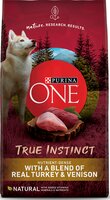
Purina OneTrue Instinct With A Blend Of Real Turkey & Venison
Check PriceDog Food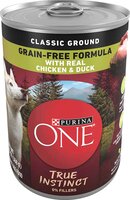
Purina OneTrue Instinct Grain-Free Formula With Real Chicken & Duck (Classic Ground)
Check PriceCat Food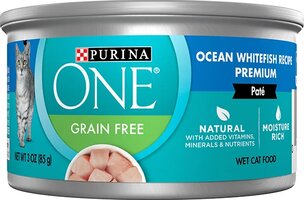
Purina OneGrain Free Ocean Whitefish Recipe Premium Pate
Check PriceTop Rated Hill's Science Diet Recipes
Dog Food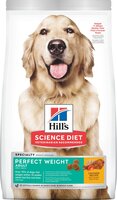
Hill's Science DietPerfect Weight Adult Chicken Recipe For Dogs
Check PriceDog Food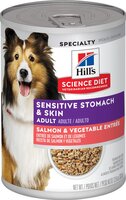
Hill's Science DietAdult Sensitive Stomach & Skin Salmon & Vegetable Entree
Check PriceCat Food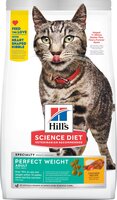
Hill's Science DietPerfect Weight Adult Chicken Recipe
Check PriceCat Food
Hill's Science DietAdult Hairball Control Savory Chicken Entree
Check Price

